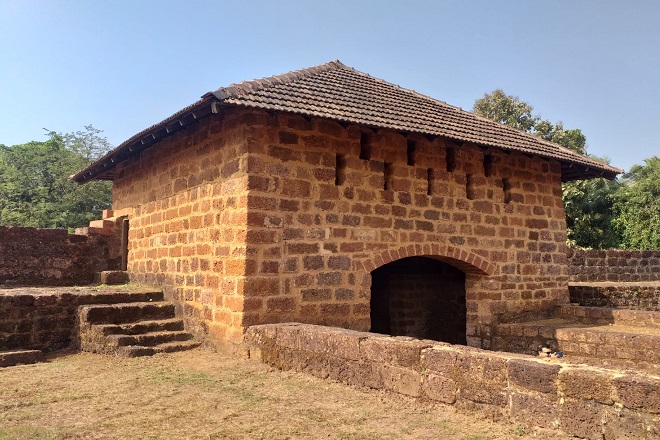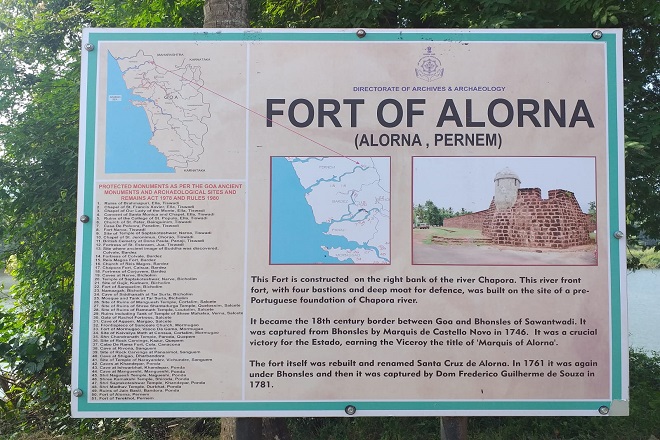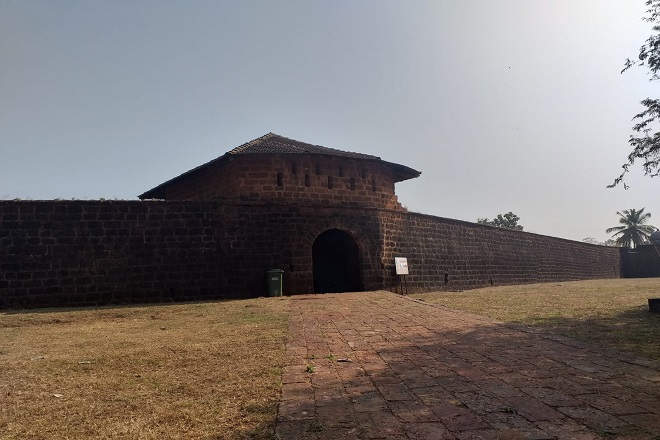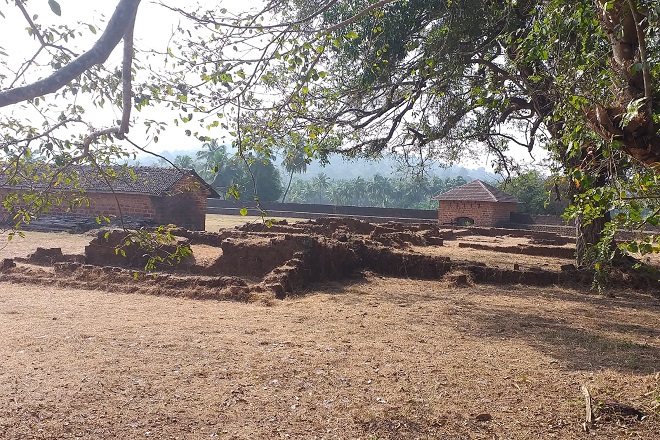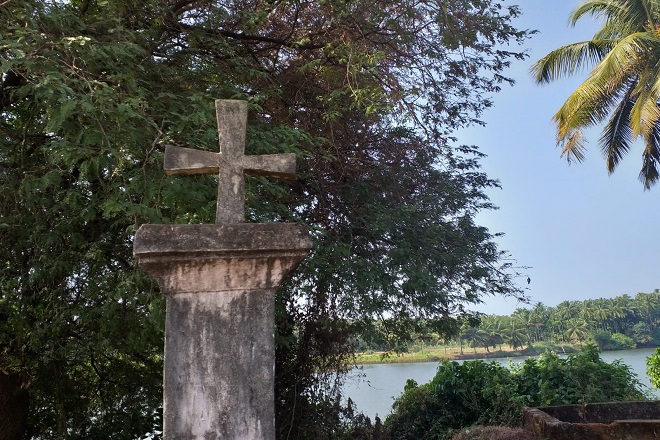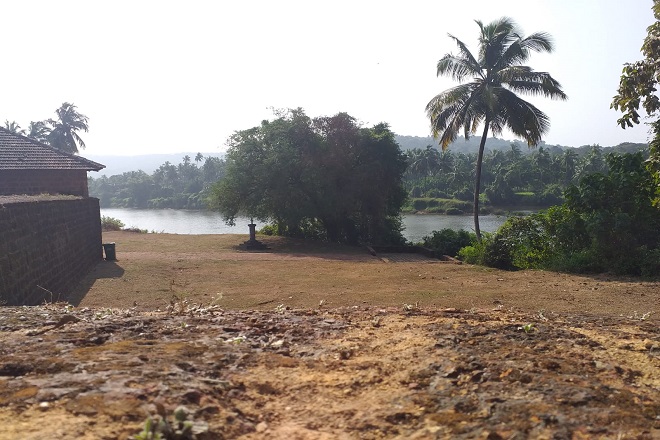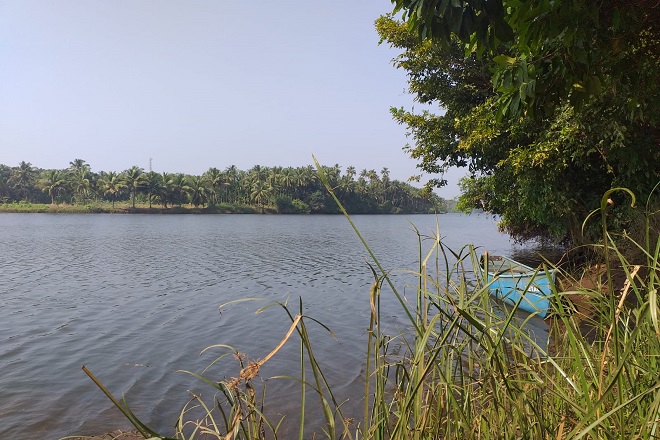Alorna Fort, Goa
Address
Alorna, Pernem, North Goa, 403512
Year Built In
17 Century
Built By
Bhonsles of Sawantwadi
Getting There
Located about 30 kilometers from Panaji city, the Alorna Fort can be reached by road. Advisable to travel by car or bike as public transport options are limited
Things To Do And See
- Enjoy the scenic views from the fort - The Chapora river flows by towards Colvale
Ticket Price
Entry Free
Visiting Time
Geo Location
15.700370 N, 73.905345 E
Situated in the peaceful village of Alorna in North Goa, the Alorna Fort serves as a reminder of the area's deep historical heritage. Perched above the tranquil Chapora River, the fort's weathered walls enclose tales of battles, conquests, and strategic significance, providing a compelling journey through history for enthusiasts and curious travelers alike
A brief history of the Alorna Fort
Alorna Fort was constructed in the 17th century by the Bhonsles of Sawantwadi, a Maratha dynasty that ruled parts of Goa and Maharashtra. This fort was a defensive structure designed to counter the expanding Portuguese forces on the western coast of India. Its strategic location along the Chapora River enabled the Marathas to monitor enemy movements and safeguard the interior regions of their kingdom.Despite its architecture and advantageous positioning, the fort eventually fell to the Portuguese in 1746, under the command of the Marquis of Alorna, after whom the fort is named. Once captured, the fort was repurposed by the Portuguese as a military outpost to defend the northern territories of Goa.
Although Alorna Fort is neither as expansive nor as well-preserved as other notable forts in Goa, like Aguada or Chapora, it possesses a unique charm. Built in a traditional style, the fort features thick laterite stone walls, bastions at each corner, and strategically placed watchtowers that offer breathtaking views of the surrounding landscape. The structure is rectangular in shape, with four sturdy bastions designed to accommodate large cannons. Despite some areas showing signs of deterioration over time, the fort continues to evoke a sense of grandeur and resilience. The weathered walls, standing tall after centuries of exposure to the elements, offer a glimpse of the fort's former defensive prowess. From the top, visitors are treated to stunning views of the landscape and the calm Chapora River, adding to the fort's enduring appeal.
Alorna Fort, rich in historical significance, has been largely neglected, thus being overshadowed by Goa's more renowned forts. However, its importance is rooted in the tales of the Maratha-Portuguese conflicts. The fort's capture and subsequent control by the Portuguese highlight the power struggles between European colonial forces and Indian rulers in the 18th century.
Recently, the Goa government has begun efforts to restore and preserve Alorna Fort, acknowledging its historical and cultural significance. Despite being partially in ruins, the fort has become a favored destination for tourists looking for a tranquil retreat from Goa's crowded beaches and bustling tourist spots. Visitors are often attracted by the fort's scenic surroundings. The area around Alorna is relatively pristine, featuring lush greenery, a flowing river, and a serene atmosphere. Nature enthusiasts and photographers, in particular, value the fort for its panoramic views of the Goan countryside.
How to Get There
Located about 30 kilometers from Panaji city, the Alorna Fort can be reached by road. It is advisable to travel by a car or a bike to explore this hidden gem, as public transportation options to the fort are limited. The journey to the fort is itself an adventure, as it takes visitors through quaint Goan villages with lush greenery, open fields, and peaceful riverbanks.
Though not as famous as some of Goa's other historic landmarks, Alorna Fort is a treasure trove for those interested in the lesser-known aspects of the state’s history, Its role in the Maratha-Portuguese conflicts, coupled with its tranquil surroundings, the fort stands as a reminder of Goa’s dynamic past and its strategic importance in India’s history.
A brief history of the Alorna Fort
Alorna Fort was constructed in the 17th century by the Bhonsles of Sawantwadi, a Maratha dynasty that ruled parts of Goa and Maharashtra. This fort was a defensive structure designed to counter the expanding Portuguese forces on the western coast of India. Its strategic location along the Chapora River enabled the Marathas to monitor enemy movements and safeguard the interior regions of their kingdom.Despite its architecture and advantageous positioning, the fort eventually fell to the Portuguese in 1746, under the command of the Marquis of Alorna, after whom the fort is named. Once captured, the fort was repurposed by the Portuguese as a military outpost to defend the northern territories of Goa.
Although Alorna Fort is neither as expansive nor as well-preserved as other notable forts in Goa, like Aguada or Chapora, it possesses a unique charm. Built in a traditional style, the fort features thick laterite stone walls, bastions at each corner, and strategically placed watchtowers that offer breathtaking views of the surrounding landscape. The structure is rectangular in shape, with four sturdy bastions designed to accommodate large cannons. Despite some areas showing signs of deterioration over time, the fort continues to evoke a sense of grandeur and resilience. The weathered walls, standing tall after centuries of exposure to the elements, offer a glimpse of the fort's former defensive prowess. From the top, visitors are treated to stunning views of the landscape and the calm Chapora River, adding to the fort's enduring appeal.
Alorna Fort, rich in historical significance, has been largely neglected, thus being overshadowed by Goa's more renowned forts. However, its importance is rooted in the tales of the Maratha-Portuguese conflicts. The fort's capture and subsequent control by the Portuguese highlight the power struggles between European colonial forces and Indian rulers in the 18th century.
Recently, the Goa government has begun efforts to restore and preserve Alorna Fort, acknowledging its historical and cultural significance. Despite being partially in ruins, the fort has become a favored destination for tourists looking for a tranquil retreat from Goa's crowded beaches and bustling tourist spots. Visitors are often attracted by the fort's scenic surroundings. The area around Alorna is relatively pristine, featuring lush greenery, a flowing river, and a serene atmosphere. Nature enthusiasts and photographers, in particular, value the fort for its panoramic views of the Goan countryside.
How to Get There
Located about 30 kilometers from Panaji city, the Alorna Fort can be reached by road. It is advisable to travel by a car or a bike to explore this hidden gem, as public transportation options to the fort are limited. The journey to the fort is itself an adventure, as it takes visitors through quaint Goan villages with lush greenery, open fields, and peaceful riverbanks.
Though not as famous as some of Goa's other historic landmarks, Alorna Fort is a treasure trove for those interested in the lesser-known aspects of the state’s history, Its role in the Maratha-Portuguese conflicts, coupled with its tranquil surroundings, the fort stands as a reminder of Goa’s dynamic past and its strategic importance in India’s history.
